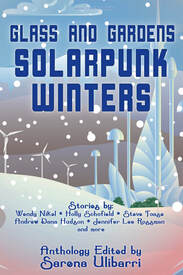 Guest Blog by Andrew Dana Hudson In the grand scheme of things, what we have is a waste disposal problem. Fossil carbon was once nicely tucked away underground, where it had little impact on the atmosphere, the oceans, or the biosphere. Then we dug it up, and I don’t much blame us, for millions of years and immense pressure had packed into those hydrocarbons incredible potential to do work and release heat. But now all that burned fossil floats free through our world in a low energy state, a waste product, garbage in the air, a billion roaming genies, released from their barrels, with all their wishes used up. So we have to stop emitting air-trash, of course, and if we are very fast and lucky we might halt the runaway train, find a stable perch for the Earth at the edge of more dangerous attractor basins. A stable hothouse would be very different than the planet our ancestors knew, but perhaps we could live there and continue to make love and beauty and interesting lives. Eventually, however, I’d like to think that we’d talk about taking out some of that trash. It’s possible; we can do most anything, chemically, if we harness enough of the sun’s energy. The amount of carbon we need to dispose of is about the size of Lake Michigan. We could try to put it back where it came from, sucking it out of the air with solar-powered machines, pumping it into vast underground reservoirs. But we could also imagine grand afforestation projects. If we made the arid Sahel in Africa into a jungle as dense and long-lived as the Black Forest of Europe, that would fix into wood and soil much of the 500 gigatons of carbon that’s causing us so much trouble. There are limits to such a plan—nutrient bottlenecks that would need to be finessed, heat waves that would need to be adapted to—but what interests me more is the politics. Imagining that winding the Earth back to pre-industrial temperatures might be just as controversial for some parties as letting us fall into the hothouse today...well, I think that brings some perspective to our present climate dilemma. Solarpunk is uniquely equipped to think about these choices and the long, slow process of taking responsibility for maintaining the subtle machinery of our world. I am drawn again and again to this future history. So while my story “Black Ice City” takes place at the North Pole, it is overshadowed by events at the equator. The Burning Man-style festival culture the story explores depends on iceless arctic summers; I wanted to imagine a kind of beauty that could only exist in a hothouse world we would desperately like to avoid—guiding the freezing of the pole into something beautiful, architectural, and rare. And then I wanted that precious culture to be threatened by a change that we, from our fearful 21st Century vantage, would likely support. Their impending solastalgia is in some ways the mirror of our own. At the end of Kim Stanley Robinson’s melancholy generation ship novel Aurora, the interstellar settlers who retreat back to Earth are given work moving beaches swamped by rising seas. It’s a poignant idea. After all, sandy playas are worn by millennia of wave and tide. If the waters overtake them in a few decades, we’ll be walking into the ocean through mud and concrete and dead grass. The other option is described in this story: moving the seas. We cool the world, pump new glaciers back onto Greenland, Antarctica, and reclaim the sunken land. An almost unimaginable infrastructural effort, but I say solarpunk should imagine it. In the very long run—past the disasters and dislocations and societal breakdowns that climate change has in store for us—we’ll need to decide how much we want to accept and live in the hotter world we’ve made, and how much we want to engineer the planet back on track. Are we going to move the beaches? Or are we going to move the seas? Andrew Dana Hudson is an award-winning speculative fiction writer. He studies sustainability at ASU and is a fellow in the Center for Science and the Imagination’s Imaginary College. His solarpunk work includes the story “Sunshine State” and the essay “On the Political Dimensions of Solarpunk.” He lives in Tempe, Arizona.
0 Comments
 Guest Blog by Brian Burt Solarpunk has always resonated with me. I love optimistic visions of a future where technology meshes with the natural world, transforming enemies into allies. An article about seasteading made me wonder: if people can build environmentally friendly floating cities in the ocean, why not on the vast expanse of the Great Lakes that border my home state of Michigan? A recent family trip to Isle Royale — probably the most remote U.S. national park, a rugged chunk of wilderness in the middle of Lake Superior — provided the final bit of inspiration. To naturalists, Isle Royale is famous for its Winter Study of moose and wolf populations isolated on a 200-square-mile island far from human civilization. What better place for the Native American characters in my short story "Snow Globe" to launch their archipelago of lakesteads, dynamic floating laboratories where they can experiment with new kinds of society and culture? Lake Superior herself became a character as well: cold and deep and lovely, her calm surface capable of exploding with the fury of winter storms. (My family can assure you, after our stomach-churning ferry ride back from Isle Royale to the Michigan mainland, that you wouldn't like her when she's angry.)  The seasteading (or lakesteading, in the case of "Snow Globe") movement seeks to chart a new course for human social evolution. People come together to form sovereign, floating city-states with their own unique spin on how to govern themselves. They create sustainable systems that allow them to be self-sufficient, balancing what they create with what they consume, ensuring that they don't degrade the precious resources that empower their freedom. And they can change their minds. If they don't like their neighborhood, they can detach their section and move to another part of the city. If they're really unhappy with the direction their community has taken, they can tow their homes to a different floating city altogether. Their world is like the vast body of water on which it floats: flowing, swirling, shifting, never stagnant. Isle Royale remains the one constant. It has withstood the steady pounding of Lake Superior for millennia, providing a refuge for endangered creatures and ancient legends alike. When my wife and son and I hiked the densely wooded trails along Rock Harbor, saw moose wading into the shallows and heard the haunting cries of loons, we felt blessed, touched by a magic rarely encountered in the modern world. How could any writer not draw inspiration from an experience like that! I loved exploring the fictional world inhabited by the characters of "Snow Globe." I hope you do, too. Just remember: on Isle Royale, or anywhere on Lake Superior, surprises await. Keep your eyes open and your life jackets strapped tight! Brian Burt is an award-winning writer of speculative fiction with environmental themes. His debut novel, "Aquarius Rising 1: In the Tears of God," won EPIC’s 2014 eBook Award for Science Fiction; the sequel, "Aquarius Rising 2: Blood Tide," won the Readers’ Favorite Gold Medal for Science Fiction in 2016. His story "Snow Globe" is in Glass and Gardens: Solarpunk Winters.
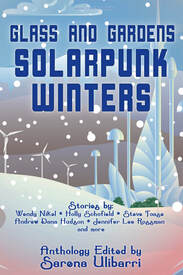 Guest Blog by Shel Graves When World Weaver Press announced the table of contents for Glass and Gardens: Solarpunk Winters, I wrote about some of my inspirations for "Set the Ice Free" on my blog. These included:
Read more about those here. However, there were also scientific inspirations powering my optimistic science fiction story. I read about: · Bioluminescence — I asked, "What if we could capture the energy in the light inside living things?" and learned that we've started to do that: "Nanotechnology Used to Harness Power of Fireflies," Science Daily, June 15, 2012 via Syracuse University. · Kinetic energy and piezoelectricity -- I asked, "What if we could capture the energy of falling raindrops." and learned we're starting to do that: "Harvesting Raindrop Energy Experimental Study," Smart Materials and Structures, Vol. 17 via IopScience. My Solarpunk Summers story "Watch Out, Red Crusher!" has piezoelectric walkways, too. · Perovskite solar cells— In this case, my motivation was artsy. My color palette for this story was black, red, and gold and I wanted a matching energy source. My friend who works in solar pointed me to perovskite solar cells, an innovation gaining popularity due to their efficiency. More via energy.gov. From these explorations, I imagined more. My favorite ideas in "Set the Ice Free": · Clothing powered by kinetic energy. Imagine wearing thin clothing that heats as you move. As a person who works outdoors at a farm sanctuary, I loved the idea of thin, flexible gloves that warm your hands when you clap. I hope someone is working on making these! · A culture of making energy. In my story, it's a cultural norm and societal expectation that everyone will create energy where possible (not just conserve it). It's rude not to carry an umbrella to capture the power of raindrops because even if you don't need the energy created someone else might. · A free flowing power-generating waterfall (no dams!). The waterfall in "Set the Ice Free" generates additional energy by churning bioluminescent algae and falling on strategically placed drums. It's beauty and power. I live in Washington State, which is the nation's top producer of hydroelectric power. But the four dams on the lower Snake River are decimating salmon runs and contributing to the starvation of our resident orca (who feed primarily on Chinook Salmon). So I imagined a powerful waterfall without dams and, again, a cultural component of a ritual of power-gathering that brings the community together. I love that World Weaver Press highlighted this quote from Set the Ice Free, "In her mind where she was free to imagine as her heart desired, space was filled with golden sails, balmy as the drowned islands of Nana's old Earth." This is me saying that fiction is just that and solarpunk (emphasis on the punk here) writers and readers don't want science and realism to create walls, borders, and barriers as to what's possible in our fiction — just as we don't want the current reality to determine our future. We're learning more about our world and its possibilities all the time and can be in a state of exploration and innovation. We can be inspired by what we are learning and, in turn, our imaginations can inspire exploration and change. Our energy for discovery is renewable. That's solarpunk! Shel Graves is a reader, writer, and utopian by the Salish Sea. She works at Pasado's Safe Haven on a mission to end animal cruelty. She earned her MFA in Creative Writing at Goddard College. She's at shelgraves.blogspot.com, @Utopianista on Twitter, and @Sheltopia on Instagram.
CLOCKWORK, CURSES, AND COAL: Steampunk and Gaslamp Fairy Tales Anthologist: Rhonda Parrish Open for Submissions: February 1 - March 31, 2020 Expected Publication: early 2021 Story Length: up to 7,500 words Payment: $0.01 per word + contributor copy Steampunk’s core is a re-imagined 1800s using steam-powered technology so it is all about gears, goggles and gaslamps. And corsets and courtship and exploration (often in the form of colonialism). I want the bustles, parasols, high tea and airships, of course, but I also welcome stories which confront the darker, problematic side of Victorian sensibilities and attitudes. Plus fairy tales. For example: What if a shoemaker was visited at night by tiny automatons? What if the little mermaid didn’t have to escape the ocean to be with her prince, but instead her social class? What if a woman’s upper class family was embarrassed by her scientific endeavors so they locked her in a tower… or tried to, anyway? Or a mechanized cat discovers a pair of fantastic boots? Or an explorer climbed a giant beanstalk and found a whole new, forgotten world? Original fairy tales are welcome, as are retellings. If you choose to retell a familiar favourite, make sure your story offers something new and interesting. I’d rather see stories that reflect the long history of fairy tales as social commentary than those which simply tell the same story with a different setting. Although steampunk tends to be focused in the American ‘wild west’ or Victorian England, this anthology needn’t be. I am open to stories set all over the world, and would love to see ‘Own Voices’ stories. As with the first book in the Punked Up Fairy Tales series, Grimm, Grit and Gasoline, I would love to see a diverse collection when it comes to which fairy tales are represented but also the races, genders and sexualities of the characters within them. Simultaneous submissions = okay. Multiple submissions = no. How to submit: Between February 1 and March 31 only, upload your story here: https://niteblade.submittable.com/submit/159218/clockwork-curses-and-coal-steampunk-and-gaslamp-fairy-tales aBOUT THE aNTHOLOGISTRhonda Parrish is the editor of more than a dozen anthologies including, most recently, Fire: Demons, Dragons and Djinns and Tesseracts: Nevertheless. In addition, Rhonda’s written work has been in publications such as Tesseracts 17: Speculating Canada from Coast to Coast and Imaginarium: The Best Canadian Speculative Writing (2012 & 2015). Her YA Thriller, Hollow, is forthcoming (March 2020) and her website, updated regularly, is at http://www.rhondaparrish.com mORE aNTHOLOGIES fROM rHONDA pARRISH |
World Weaver PressPublishing fantasy, paranormal, and science fiction. Archives
February 2024
|
- Home
-
Books
-
All Books
>
- Beyond the Glass Slipper
- Bite Somebody
- Bite Somebody Else
- Black Pearl Dreaming
- Cassandra Complex
- Causality Loop
- Clockwork, Curses, and Coal
- Continuum
- Corvidae
- Cursed: Wickedly Fun Stories
- Dream Eater
- Equus
- Fae
- Falling of the Moon
- Far Orbit
- Far Orbit Apogee
- Fractured Days
- Frozen Fairy Tales
- Glass and Gardens: Solarpunk Summers
- Glass and Gardens: Solarpunk Winters
- Grandmother Paradox
- Grimm, Grit, and Gasoline
- Haunted Housewives
- Heir to the Lamp
- He Sees You When He's Creepin': Tales of Krampus
- Into the Moonless Night
- Jack Jetstark's Intergalactic Freakshow
- King of Ash and Bones (ebook)
- Krampusnacht
- Last Dream of Her Mortal Soul
- Meddlers of Moonshine
- Mothers of Enchantment
- Mrs Claus
- Multispecies Cities
- Murder in the Generative Kitchen
- Recognize Fascism
- Scarecrow
- Sirens
- Shards of History
- Shattered Fates
- Skull and Pestle
- Solarpunk (Translation)
- Solarpunk Creatures
- Solomon's Bell
- SonofaWitch!
- Speculative Story Bites
- Trenchcoats, Towers, and Trolls
- Weredog Whisperer
- Wolves and Witches
- Anthologies and Collections
- Novels
- Novellas
- Fairy Tale
- Fantasy
- Romance
- Science Fiction
- Urban/Contemporary Fantasy
- Young Adult SFF
-
All Books
>
- Blog
- About
- Contact
- Press / Publicity
- Newsletter Signup
- Privacy Policy
- Store

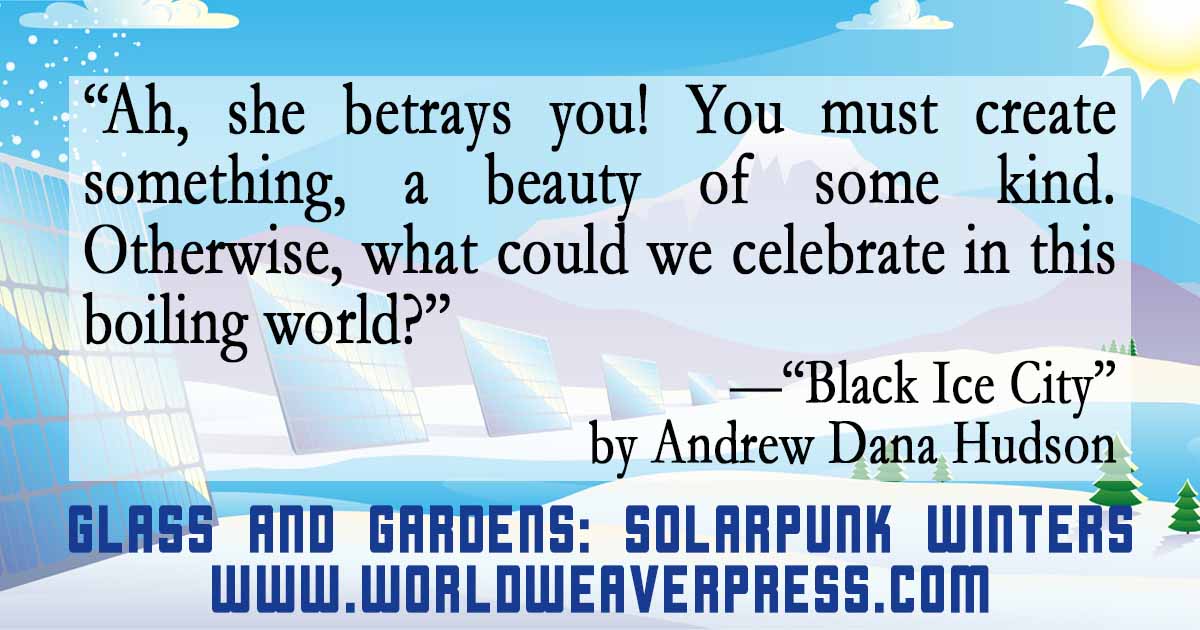
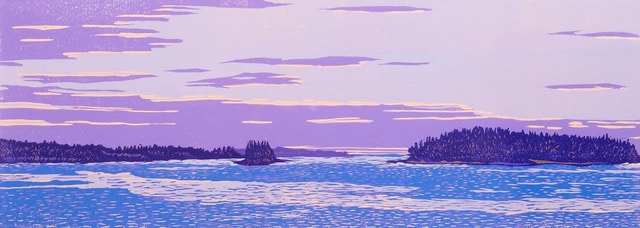
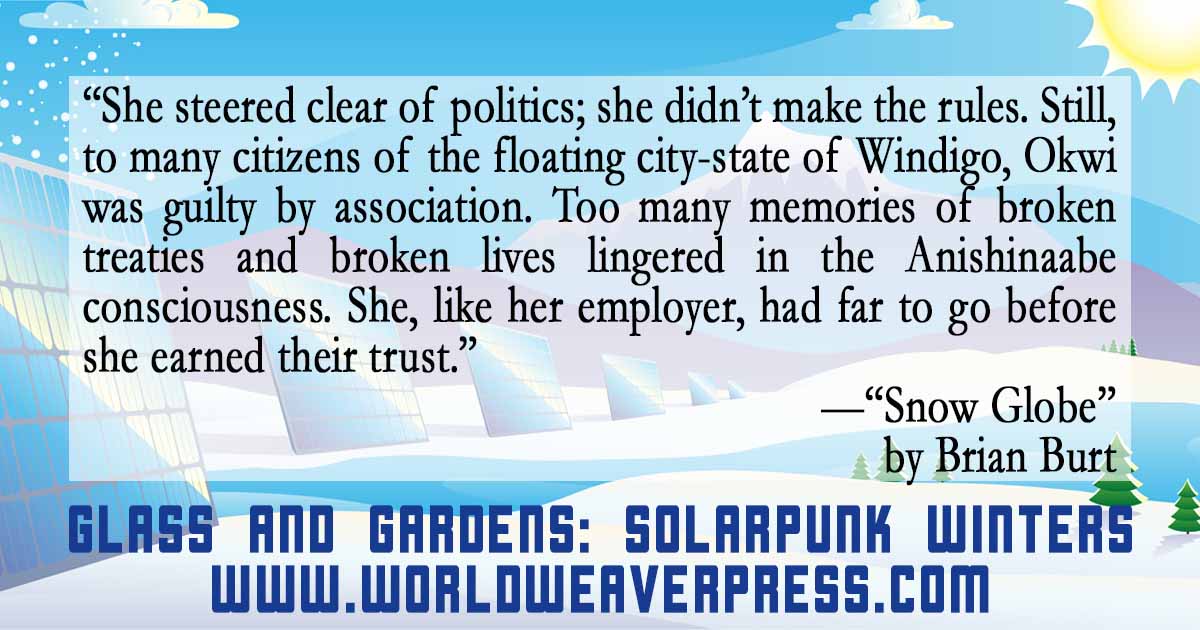
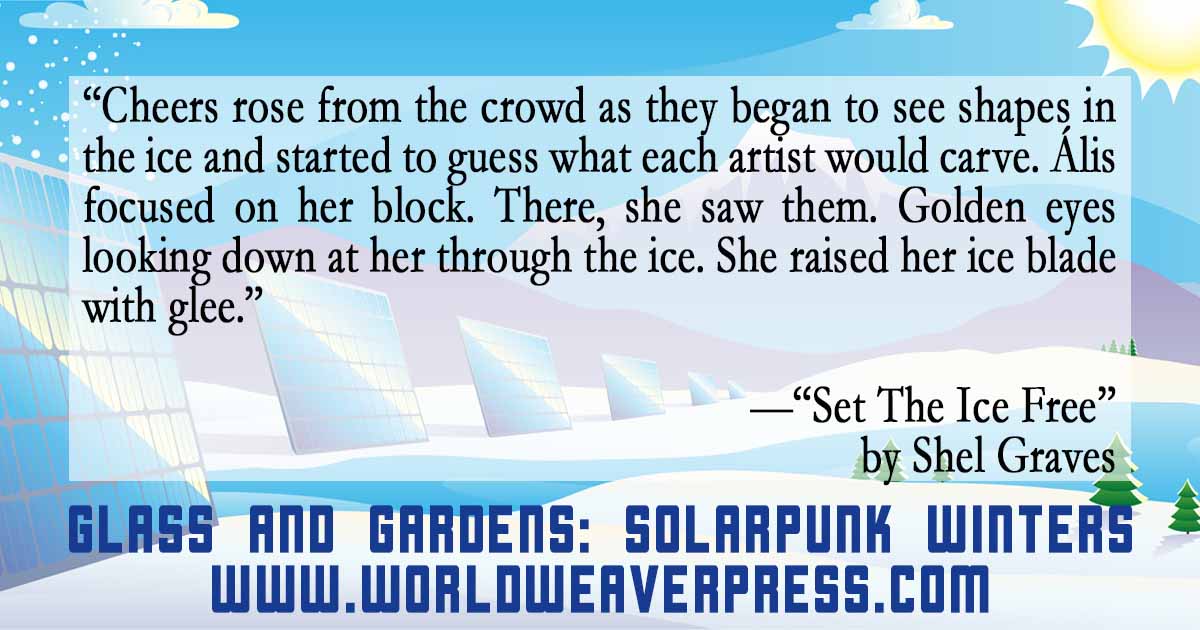
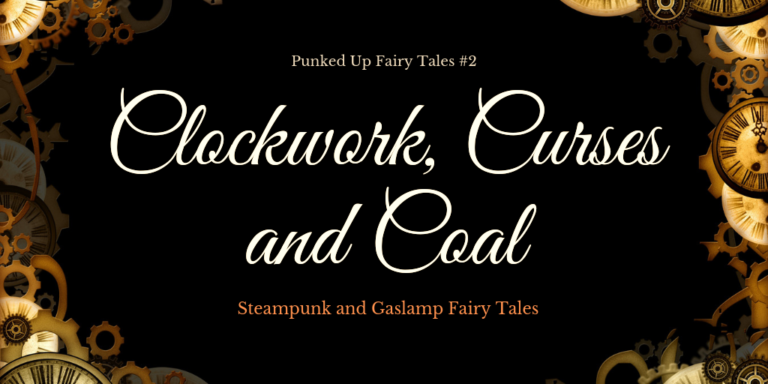
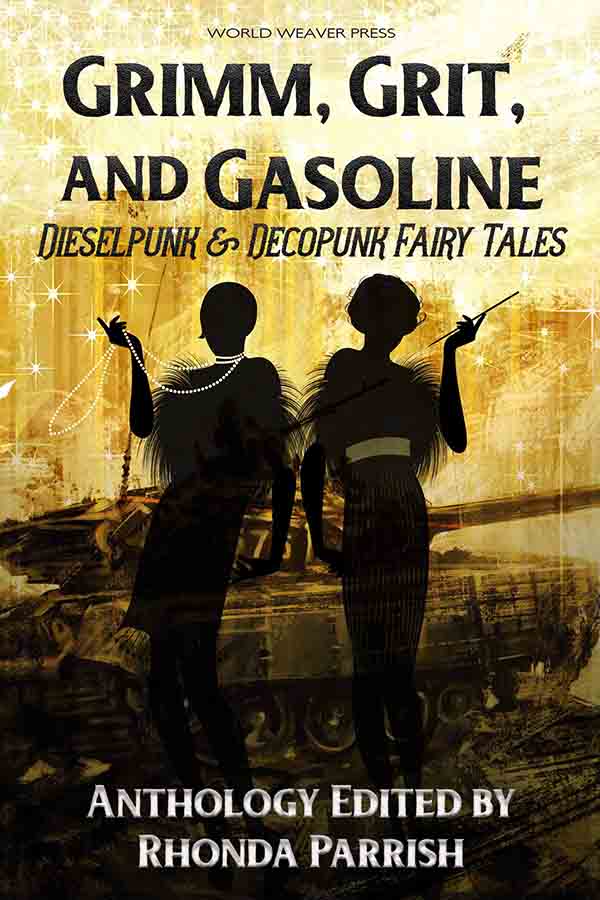
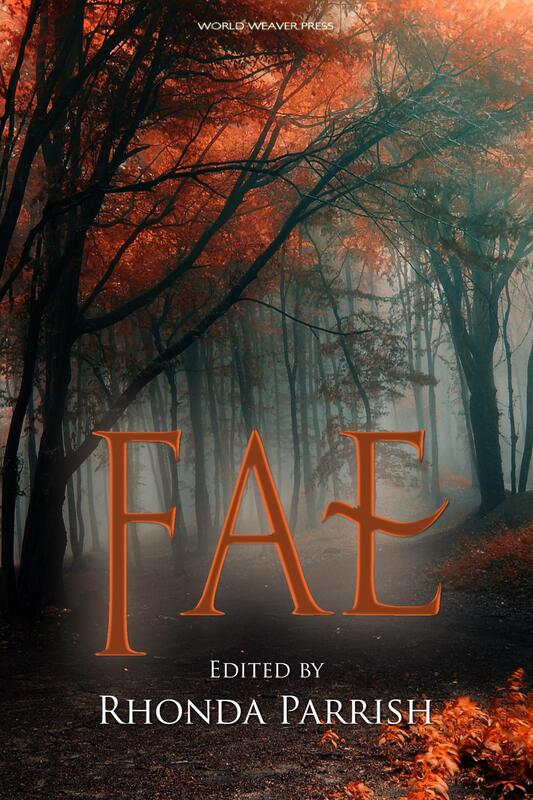
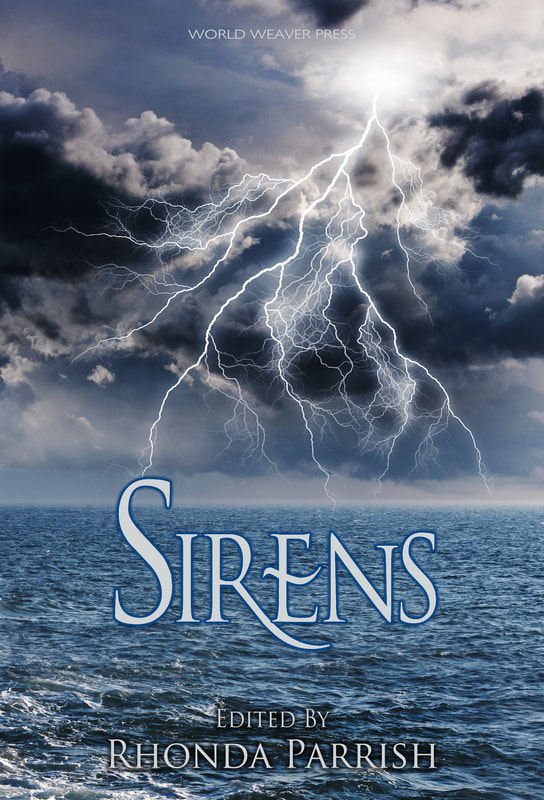
 RSS Feed
RSS Feed